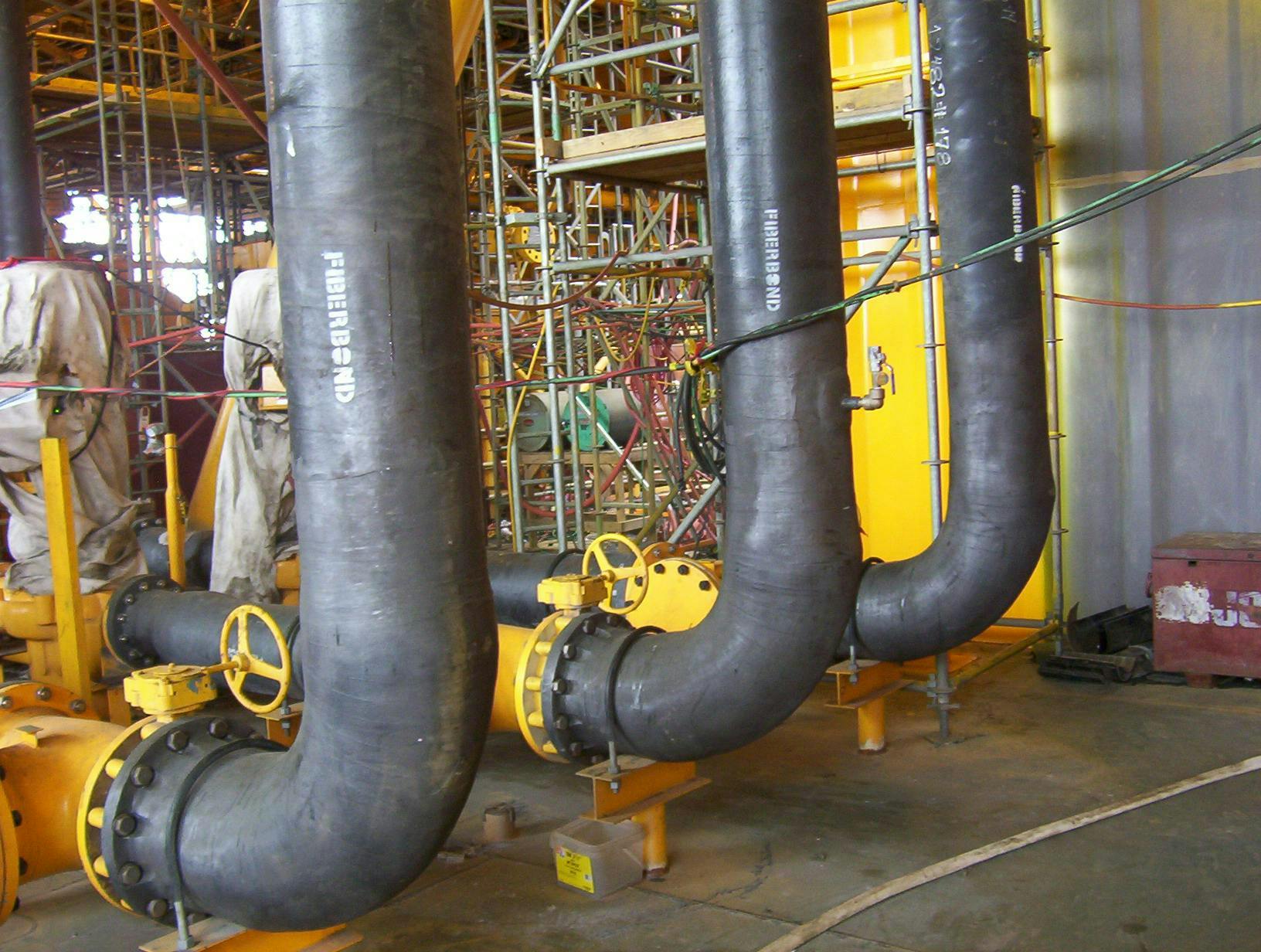By the 1990s, systems like FIBERBOND gained traction as the leading design, installed extensively on Shell’s Mars and Ram-Powell projects, proving composites could reduce topside weight by hundreds of thousands of pounds while offering durability. These early successes laid the groundwork for a broader transformation.
Composites became a practical necessity as offshore exploration pushed into deeper waters. Unlike metallic pipes, which struggled with escalating maintenance in harsh environments, composites offered a lifeline. Today, they’re a cornerstone of both greenfield developments and brownfield retrofits, with 2024 ASTM tests showing hybrid composites, reinforced with carbon fibers, doubling the strength of earlier glassfiber-reinforced plastics (GRP/FRP).
Practical advantages of composites
Composite piping systems have earned their place through a combination of practical advantages that address the core challenges of offshore operations:
- Corrosion resistance: Composites are impervious to seawater, H2S and aggressive chemicals, eliminating corrosion-related failures.
- Weight reduction: Up to 75% lighter than steel, composites lower installation costs and reduce topside loads offshore, with documented savings of more than 200,000 pounds on platforms like tension-leg platforms, enhancing stability and efficiency.
- Fire safety: Tested by organizations like the US Navy and Southwest Research Institute to IMO 753 and ISO 14692 standards, composites maintain structural integrity in hydrocarbon fires exceeding 1,000°C, offering critical protection for personnel and assets.
- Longevity: With service lives surpassing 50 years, composites reduce maintenance needs by up to 60%, driving down operational costs and boosting long-term value.
- Sustainability: Their lightweight design cuts transport emissions by 25%, and their energy-efficient manufacturing process, relying on resin curing rather than carbon-intensive smelting, reduces environmental impact.
These qualities have made composites indispensable across applications, from drain lines and seawater intake systems (including column pipes for pumps) to produced water handling, utility lines, sodium hypochlorite dosing, and waterflood modules.
The global market for composite piping is projected to reach $10 billion by 2033.
Milestones in the Gulf and beyond
The Gulf of Mexico has been a proving ground for composite piping. Over the past decades, composite firewater ring mains, operating over 20 bar and hydrotested up to 60 bar, outperformed copper-nickel pipes on production platforms, resisting corrosion while meeting rigorous safety standards.
Chevron’s Genesis and Shell’s Mars platforms showcased composites’ ability to endure punishing marine conditions, with firewater and cooling systems standing strong for decades.
A future built on technological innovation
The story of composites is still unfolding. Advances like heat-activated couplings and fire-resistant resins have addressed early concerns about joint reliability and fire performance. The integration of digital monitoring tools is enabling predictive maintenance, ensuring pipes perform reliably for decades. From firewater systems to water injection and seawater cooling, composites are redefining offshore reliability.
Conclusion
What began as a pioneering experiment in the 1980s has become a defining force in offshore oil and gas. Composite piping systems have grown from a novel idea to an essential solution, delivering safety, efficiency and sustainability in the face of mounting technical and environmental challenges.


